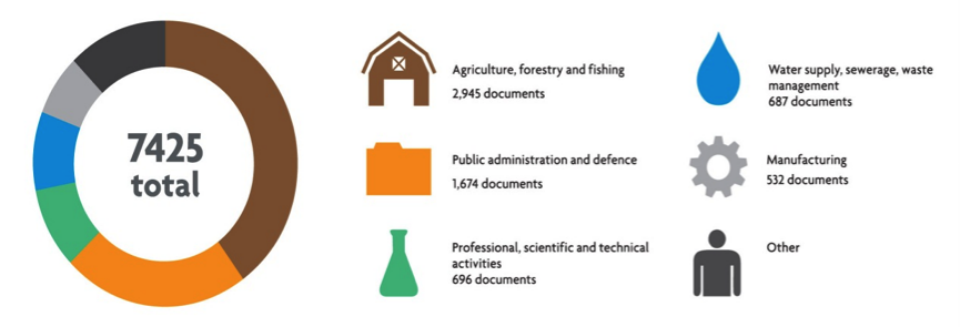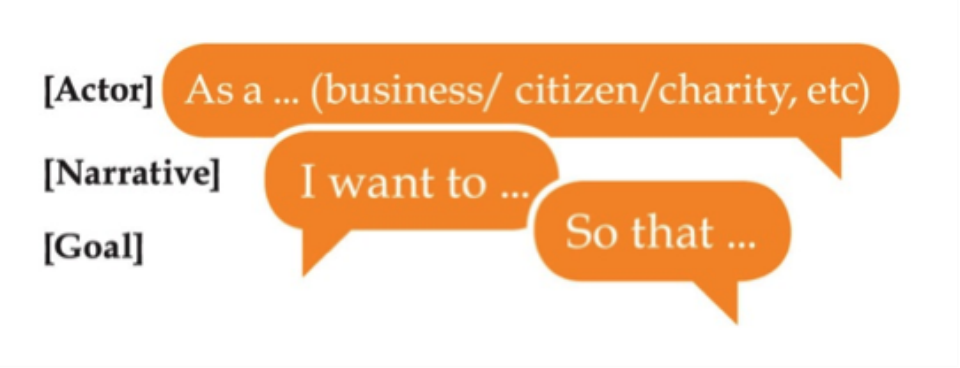Edward Lockhart-Mummery, Leader of the Smarter Environmental Regulation Review in the Department for the Environment, Food and Rural Affairs (Defra), explains how Defra and its organisations are rewriting their guidance to make it simpler, quicker and clearer for users to comply with regulations and access services.
Defra and its agencies have taken the plunge and are designing all their guidance around users, reducing reading material so far by over 80%.
The Red Tape Challenge made clear that neither the public nor industry want to see environmental or other protections watered down. Nevertheless, it was equally clear that the accumulation of rules, guidance, reporting and inspections makes it sometimes impossible to put the rules into practice.
The biggest short term gains could be made from making what to do in practice much simpler and clearer.
In fact, Defra and its agencies (such as the Environment Agency, Natural England, the Marine Management Organisation, the Animal and Plant Health Agency and the Rural Payments Agency) had over 7,000 documents with over 100,000 pages spread across its websites and were issuing 5 documents every working day. There is the equivalent of 200 to 300 full time people writing and maintaining guidance.

A sample of the guidance showed an average readability score of 40 on a scale of 1-100 where 0 is very hard to read, 65 is plain English and 100 is very easy to read.
One entrepreneur trying to work out what environmental rules would apply to a car washing business said – “the more I read the more confused I got” and 8 out of 10 micro-businesses report that they saw a lack of clear information as a major barrier to compliance. Similarly, larger companies with environmental compliance departments complained of finding it hard to keep on top of changes and know that you’re doing everything you’re meant to do.
Designing for the user
Historically guidance was designed around the law, organizational structures or a particular problem that governments wanted to solve. As this accumulates, it becomes harder to work out what you need to do on the ground.
A great example is guidance on batteries waste. This had accumulated to 32 documents with 340 pages across 6 government organizations.
Enter GOV.UK. When Defra was working out how to reform guidance in 2012, the single Government domain was in its infancy. Defra quickly realized this was a unique opportunity – to host government content in one place, and to follow its mantra of putting users first.
Terms like “user needs” and “user-centred design” are well known as key principles for product design, web design and marketing, but were less familiar in the world of government guidance. Defra’s agencies were the guinea pigs in working with the Government Digital Service to apply the concept to government content.
The tools are very different. In the traditional world of government guidance, the emphasis was often on providing comprehensive guidance on every aspect of a law and getting stakeholders round the table to make sure it said everything they wanted. Now it all starts with user need.
Defining a user need must be strict and honest. For GDS it’s the need the user has of government, not the need of government to impart information to the user. (GDS Service Manual extract)

Teams have to gather and analyse user data before designing guidance. This could be web page views, search terms, call centre data anything that helps to understand what users are trying to do and what information they need to be able to do it. Where it’s not clear precisely what users need, then user testing is necessary.
This approach shows there are 5 groups who need guidance on batteries: producers, distributers, retailers, users and processers and there is now a guide explaining what each needs to know with, on average, four pages each.
Content design is a specialist skill. Previously anyone in a policy or operational team might have written guidance and would use their own styles and methods… one piece of guidance began every chapter with a literary quote! The reforms have introduced a clear separation of roles between the content designer and the expert who helps make sure the substance is correct. This separation of roles saves time in many ways including using standard processes and ensuring content designers only write what’s needed.
Content designers are trained to use the right words in the right place so people find what they’re looking for in websearches and because only 20-28% of a web page is read. They’ll also keep asking whether guidance answers any questions it raises and whether it helps people complete their tasks.
Content strategy is important where what people need to do depends on decisions they need to take along the way. Previously guidance, for example, where people need to get a licence, has been extremely hard to navigate particularly where numbers of teams have produced guidance covering only their part of the process.
Publishing guidance is not the end of the story. It’s important to monitor web data and live comments to see if the guidance is giving people what they need.
Working out what government should do
GOV.UK’s basic proposition is that it only publishes guidance where government is uniquely placed to do so. This has been a fundamental principle of Defra’s guidance reforms.
But it’s also been a real change and a challenge. 36% of Defra’s guidance has until now been good practice advice either on what methods or techniques you might want to use to comply with laws or on what you might want to do to go further.
This has led to confusion on what’s actually required. This is worse where government bodies have not kept good practice advice up-to-date, thus appearing to require some practices that are clearly no longer good practice. Feedback has also shown that it deters those outside government from innovating and competing to develop new ways of doing things or providing advice on the latest practices. It’s difficult to compete with government.
This change is sometimes contentious. Particularly where people need advice on how to manage risks, but there hasn’t yet been space for others to develop it. Defra and agency teams are helping to facilitate this transition and are yet to find an example where external organisations could not fill the gap.
The next five years are likely increasingly to require civil servants better to define when only government can act. These reforms have given Defra a good head start in applying this discipline.
Making it stick
Defra’s smarter guidance reforms have been counter cultural. It has, of course, taken hard work and the collaboration of many people. But it has only been possible through a clear and sustained leadership by both Ministers and the executive leadership of Defra and its agencies.
Too often, the incentives in government are for announcing and implementing new initiatives or publishing new documents rather than making them effective in practice. Defra’s guidance reforms are an antidote to that.
Ultimately though the reforms will fail if Defra and agencies don’t continue to improve the content. Many of the pressures that led to the mountain of guidance still remain. There will still be the temptation to:
- fall back on guidance to show Ministers, NGOs or the European Commission that we’re doing something about a problem.
- produce your own team or organisation’s version of guidance, rather than work with others to create a single version
- design guidance to minimise your organisation’s exposure to risk rather than to help users
To avoid these pitfalls and secure the business and government savings, Defra is now working up arrangements for a cross-organisation dedicated digital content team that will:
- manage a single content map to make sure we only provide what’s needed
- retain the separation of roles between content designer and expert to ensure design and style standards are consistently met
- continuously improve content including through responding to web performance analytics and customer call data
If Defra can successfully embed these reforms it will be a leap forward towards getting ahead in the digital race.
7 comments
Comment by Neil posted on
A very good initiative. I look forward to it being replicated in other Government Departments and Agencies.
Comment by Martin posted on
This is a necessary improvement, because as it stands there is no clear guidance for contact centre agents.
It used to be the case that you would read everything off the screen unless advised otherwise by your Desk Aid. Now you need to check your email, look at other assorted notes lying about, read the screen, check the desk aid. Then you'll find there was something else you missed that has been left out of all notes because it's assumed everyone does this. The agents get the blame where local rules have been introduced for us to follow, then when a national checking team takes over nobody passes any calls because we have been doing it wrong. Hopefully someone can get this right.
Comment by Steve (HMRC) posted on
Yes most of our guidance should be read out loud and any inconsistencies addressed. Shorten those sentences. Use full stops instead of multiple commas. Experts on the particular area are essential to draft it, but their wording should be read by people who don't understand the principles. If they understand it (a bit) after reading it then the new wording is doing its job.
Comment by Julie Anderson posted on
The CSA procedures and guidance are well known amongst my colleagues as being rubbish!
They assume a lot of pre-knowledge with regard to: systems processes (could do with assuming its being described to a lay-person); legislation (most colleagues go through Google to find the information!); policy (again: assumes you know what you're looking for in the first place - and how it's 'described' in the guidance.
A similar search engine, such as that of Google, would work better. Being able to ask what you're looking for and hoping the procedures understand what you're looking for is the current search process! Which often means resorting to asking colleagues if they know the answer/process/legislation!
Whoever writes to procedures or designs the sites needs to talk to the complex case workers in Complaints Review Team - we have to know pretty much everything, from 1993 through to the 2012 scheme, and all the system processes in between!
Comment by Carolyn posted on
The links to 'Making law in a digital world:the Universal Credit Experience' and 'How good are we' don't work
Comment by A S MAY posted on
So how do i work out a readability score?
Comment by Sam posted on
Great approach and a welcome change to focus on meaningful, valuable content. Which makes the conclusion all the more odd: "... it will be a leap forward towards getting ahead in the digital race."
What does that mean? It doesn't seem to be about responding to user needs, but rather chasing arbitrary rhetoric.